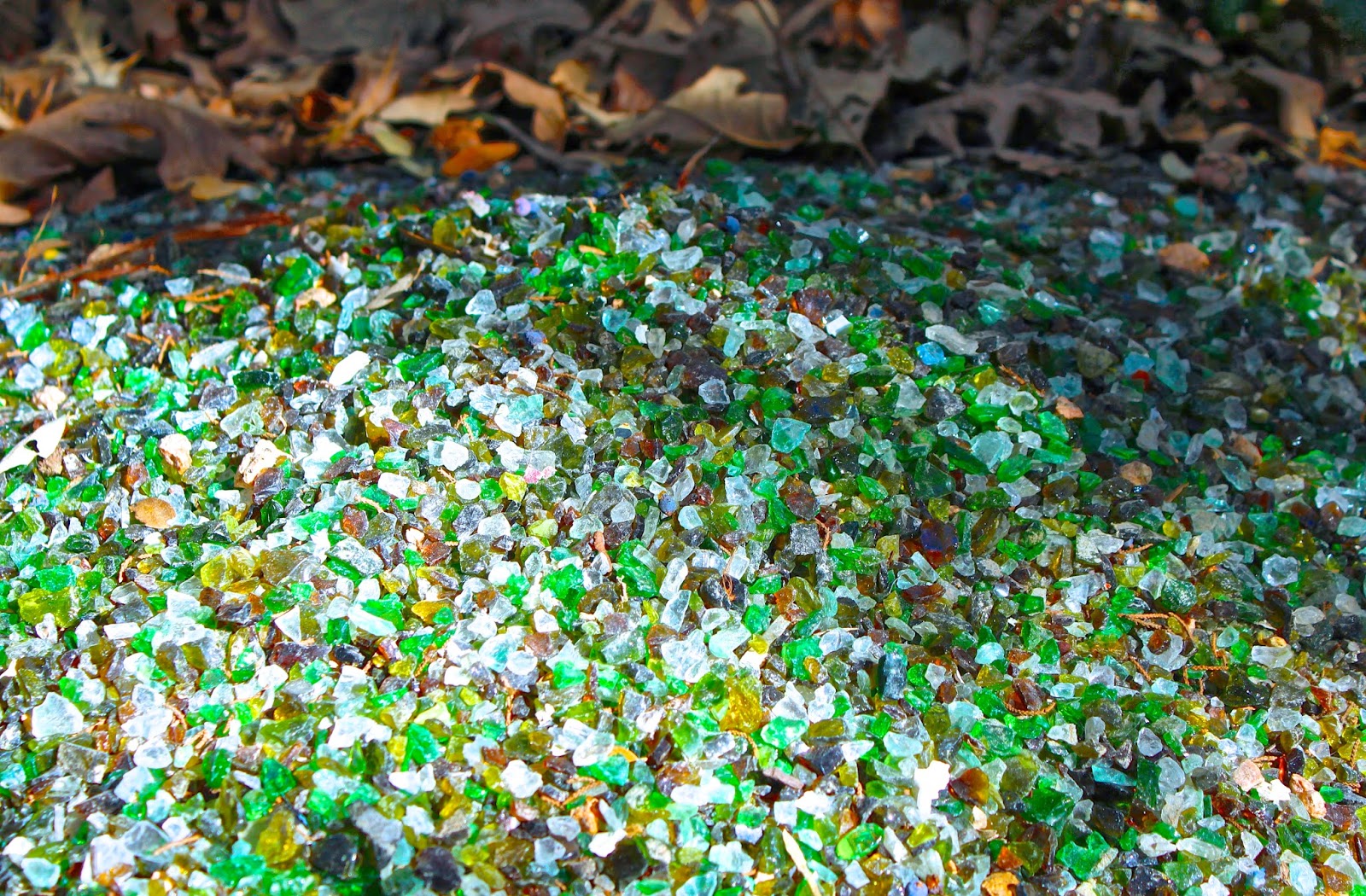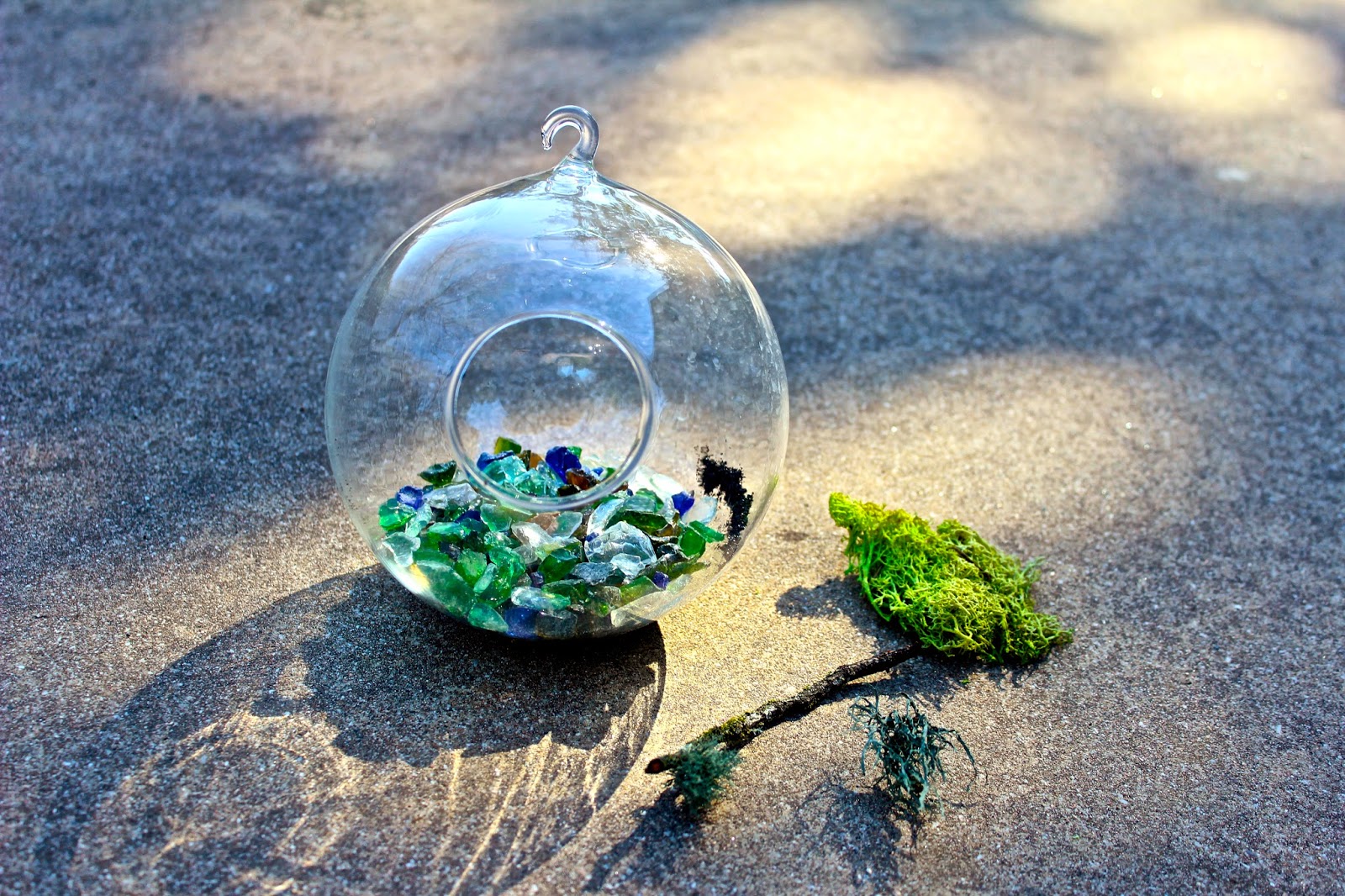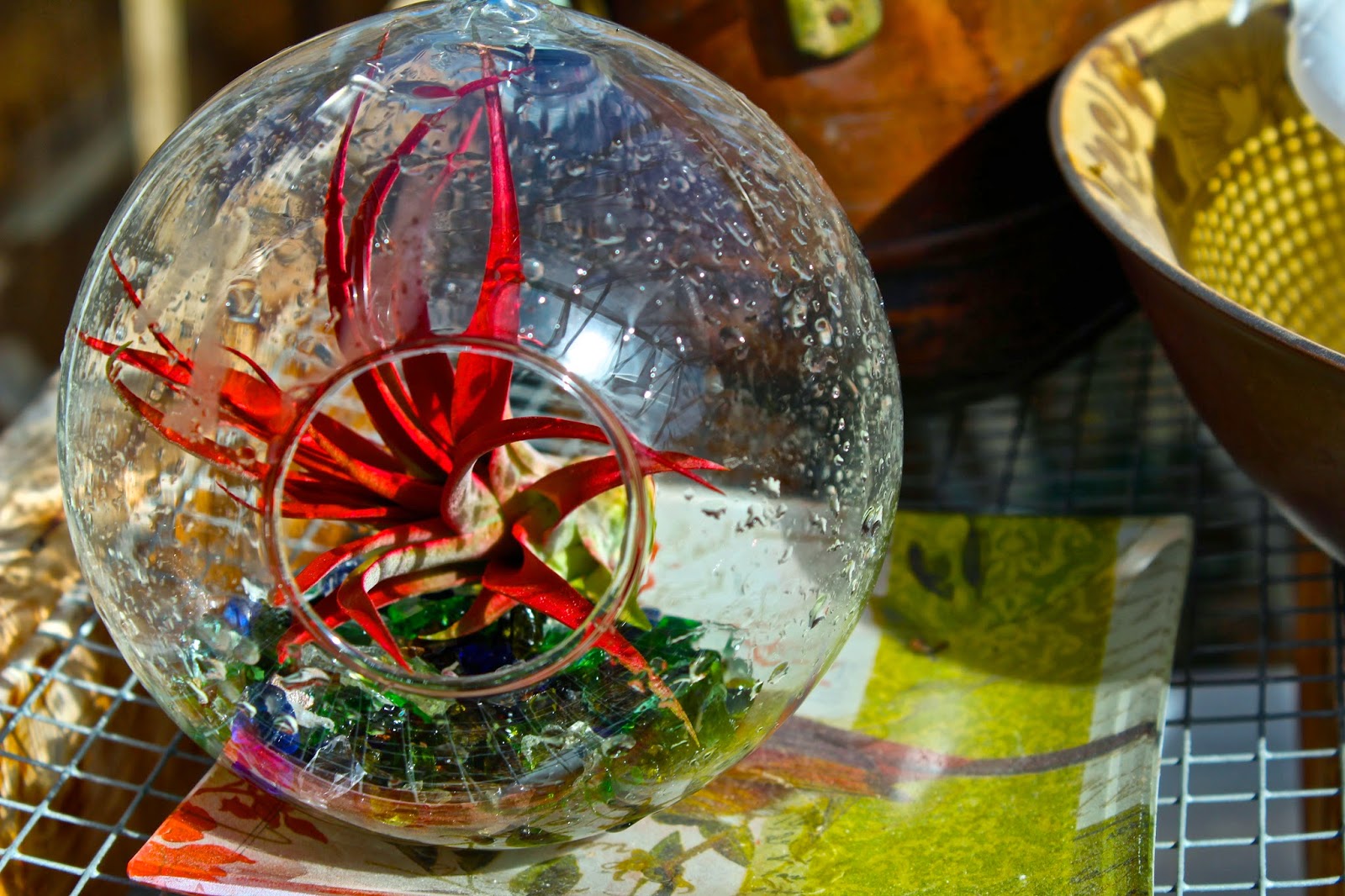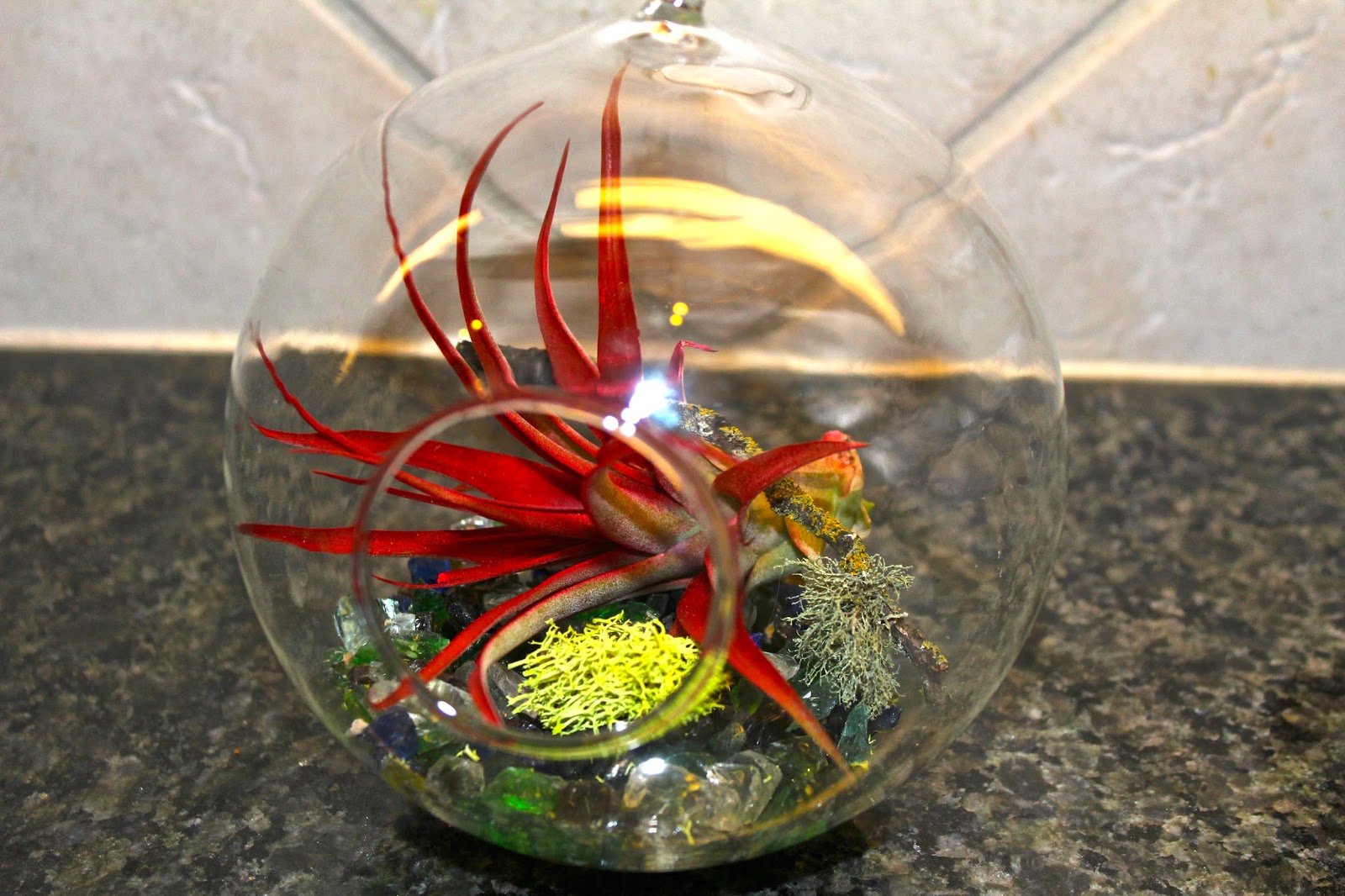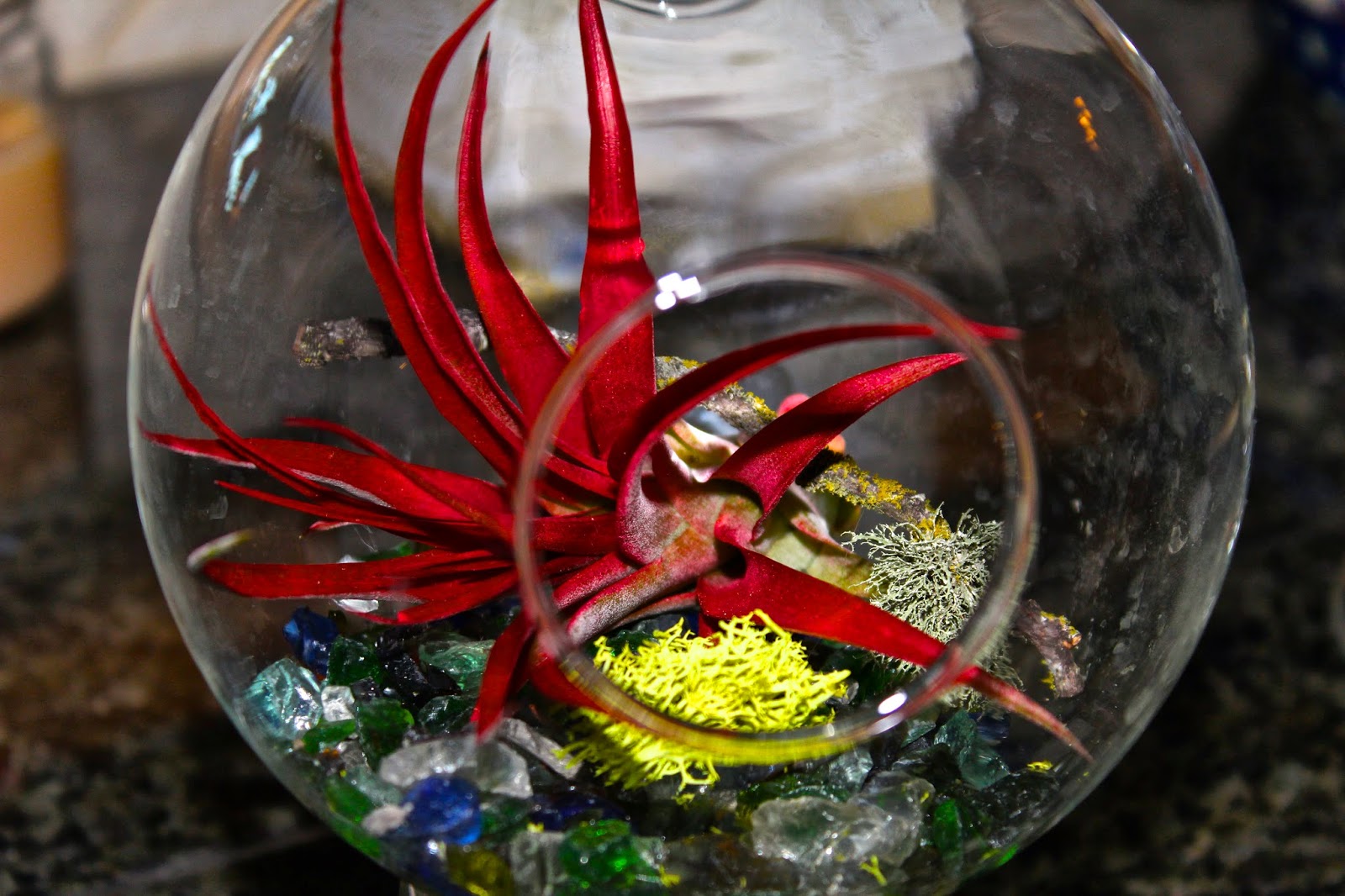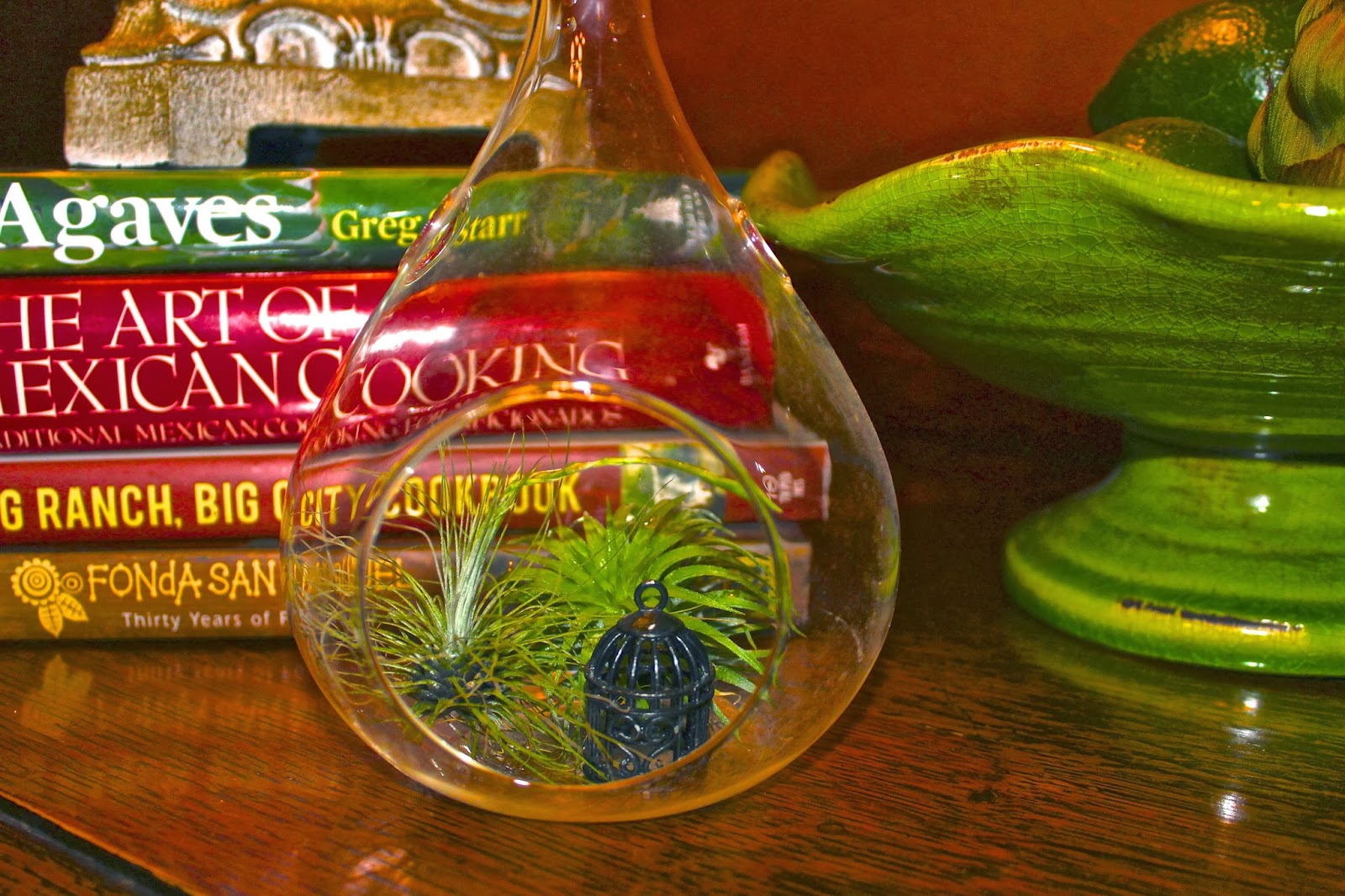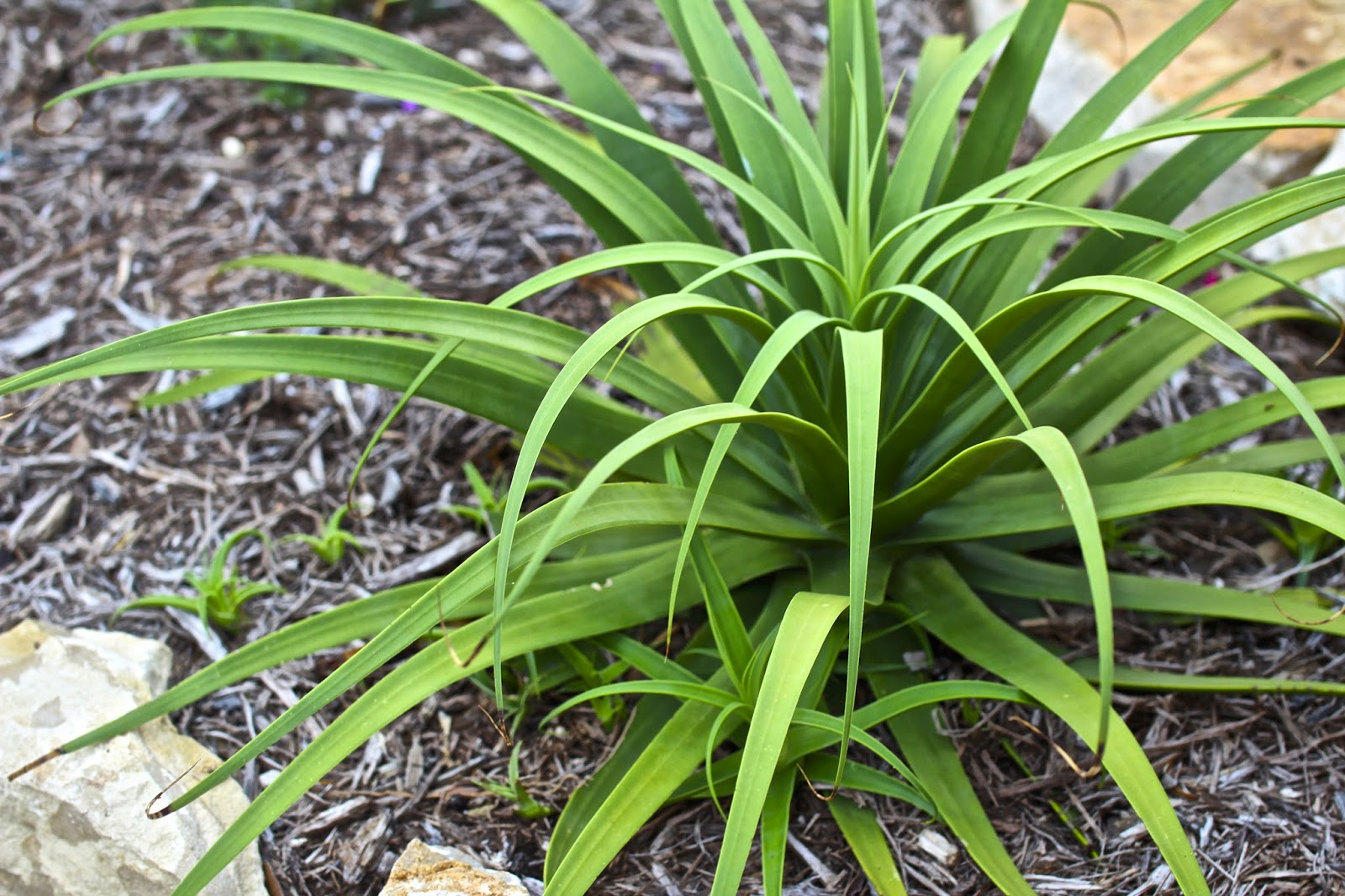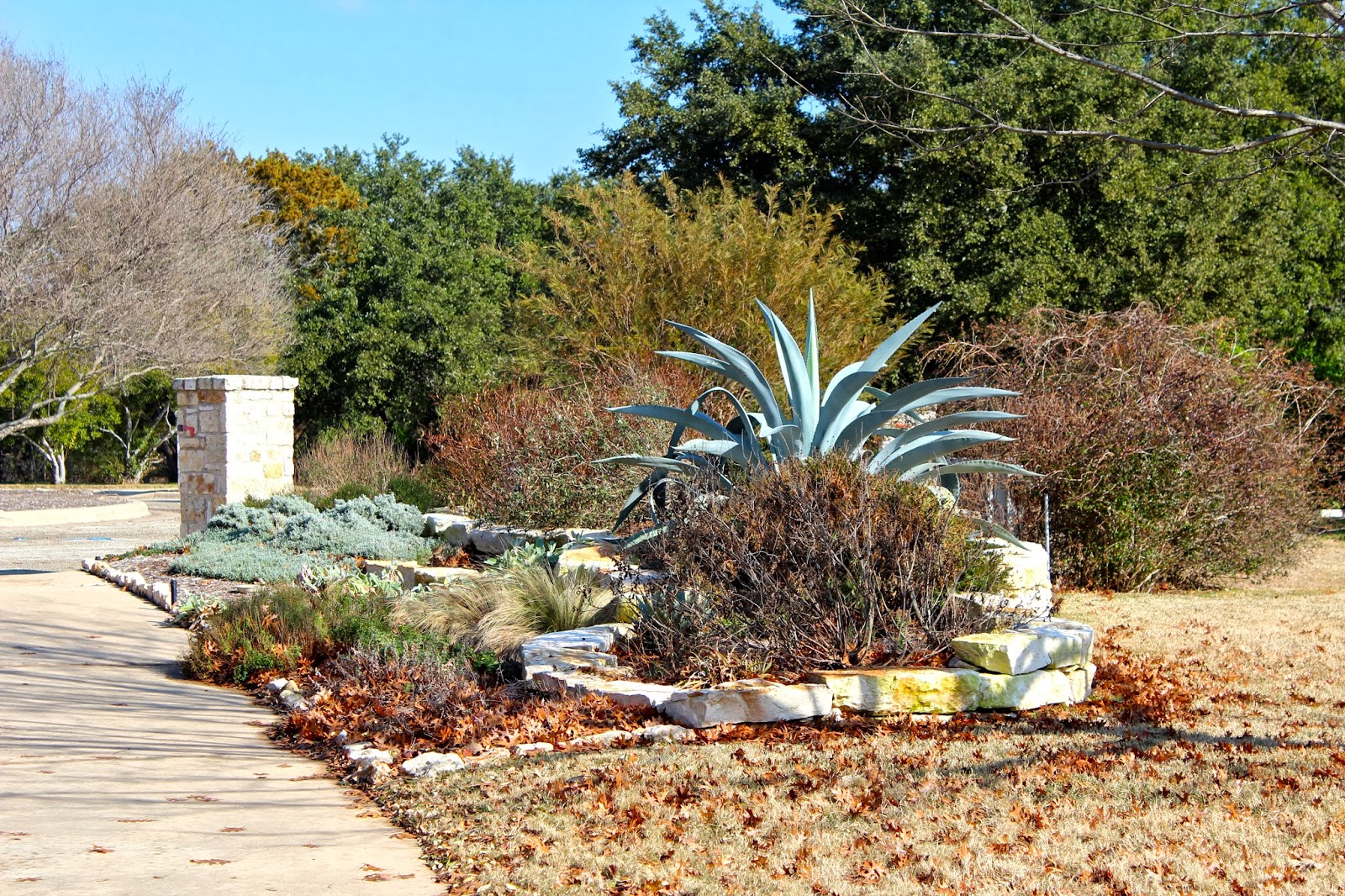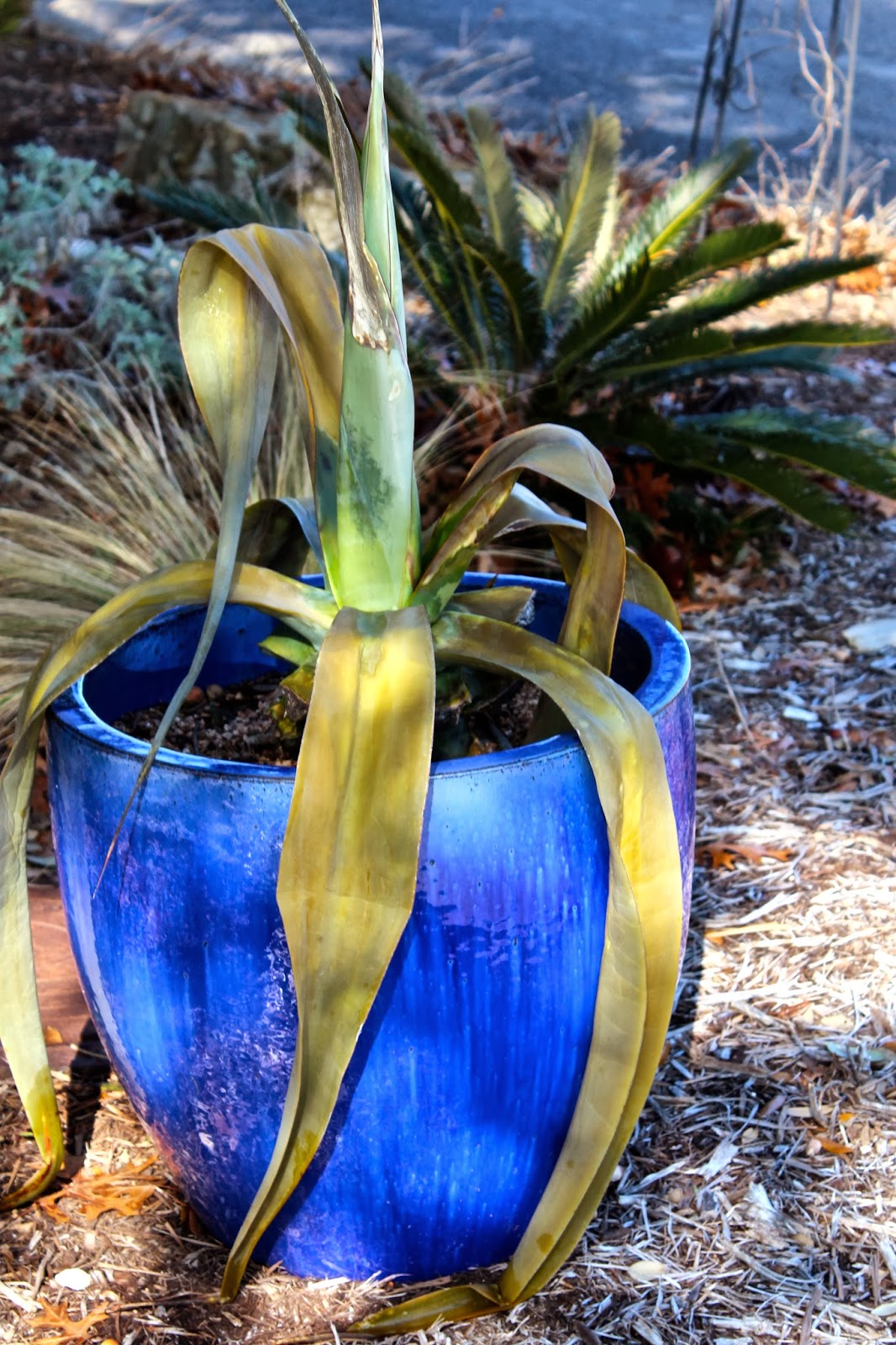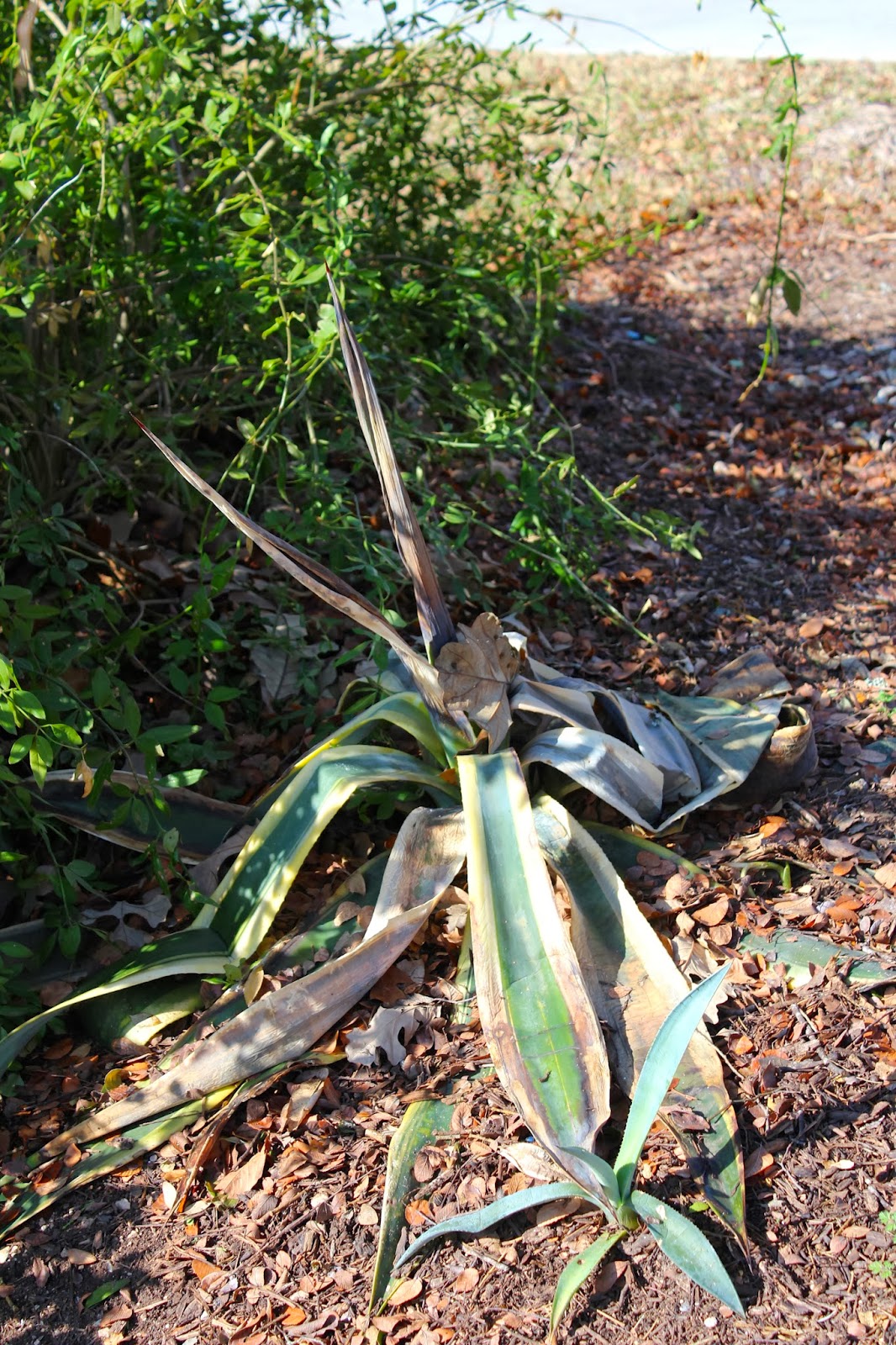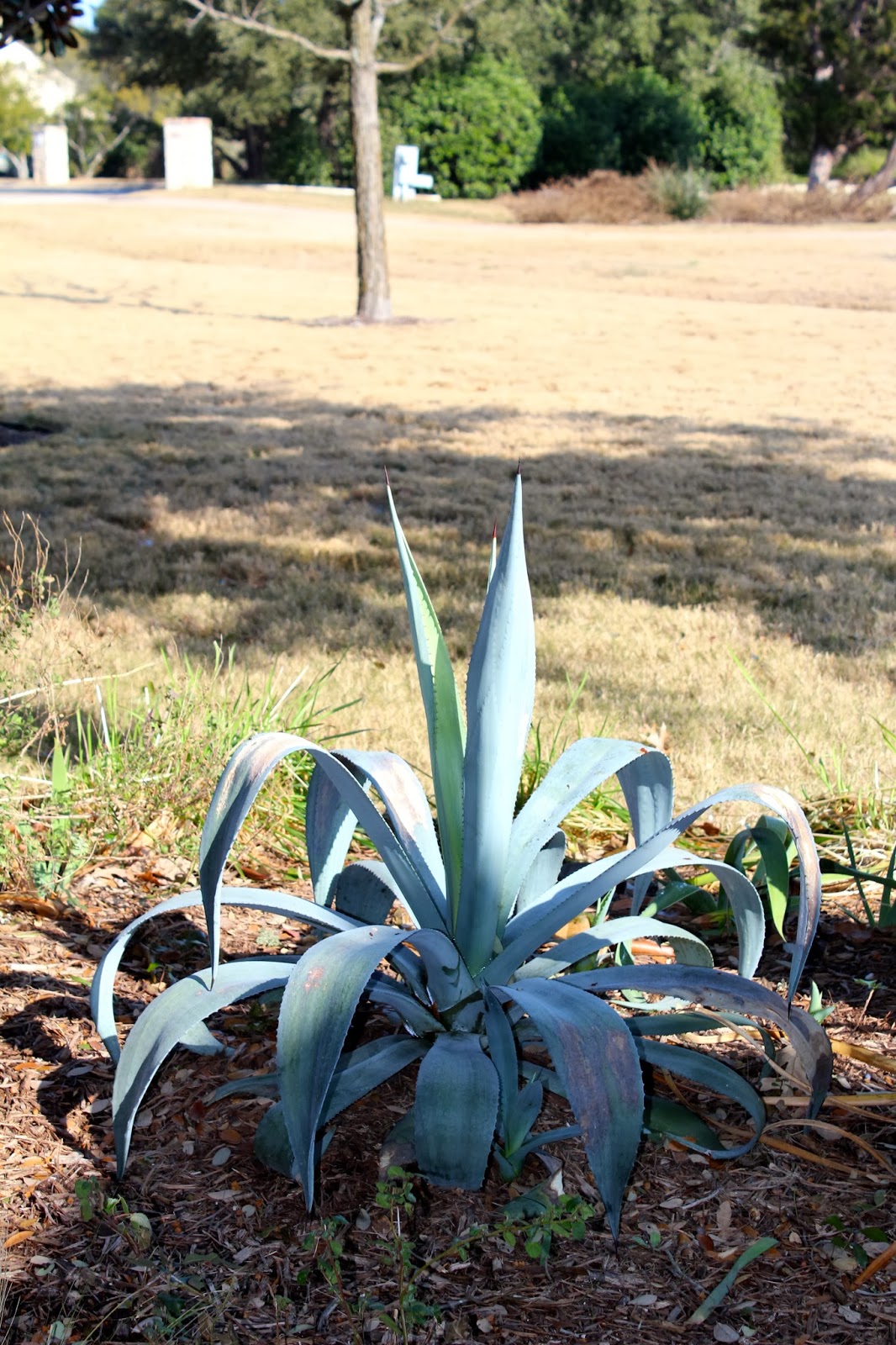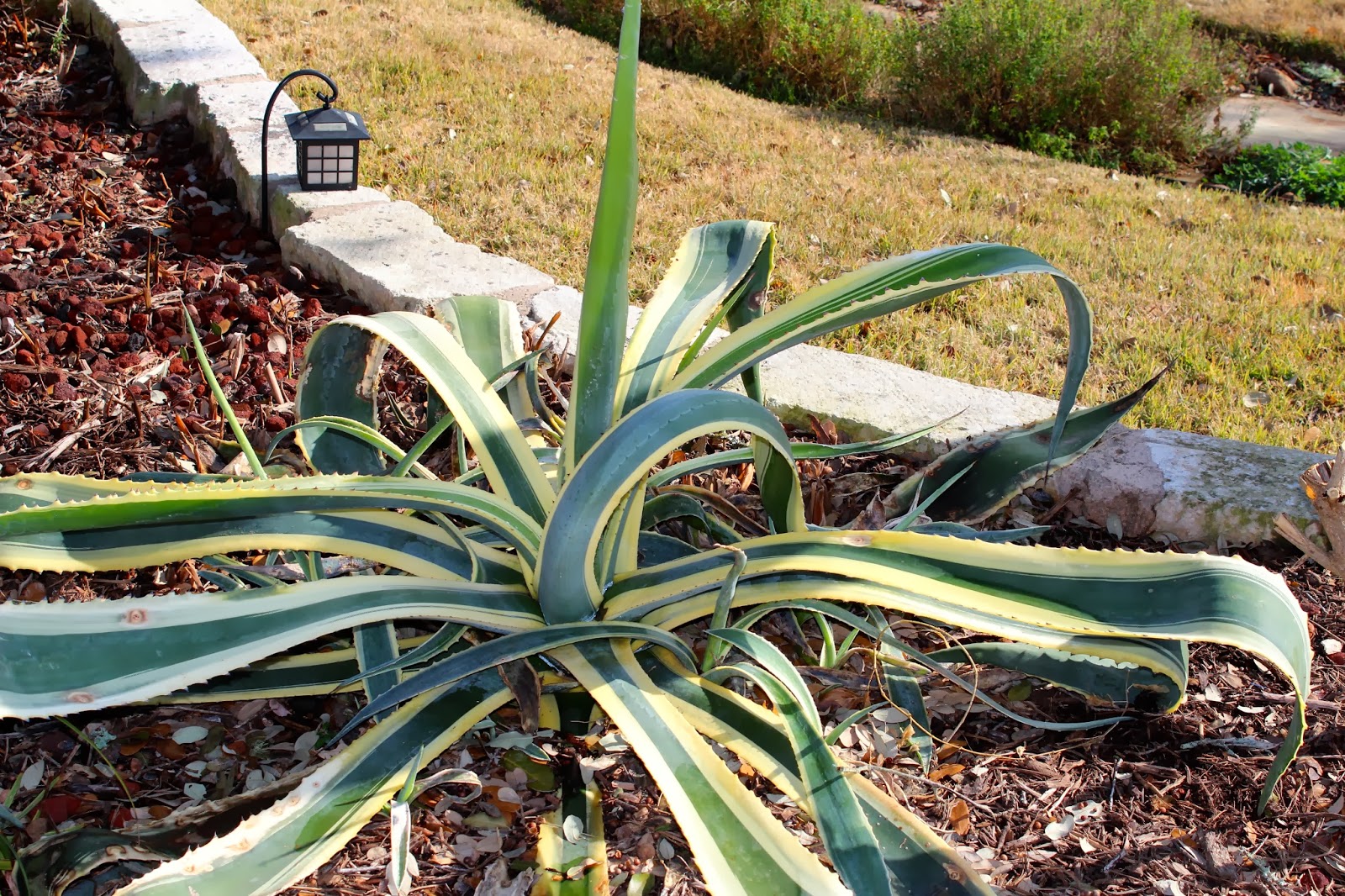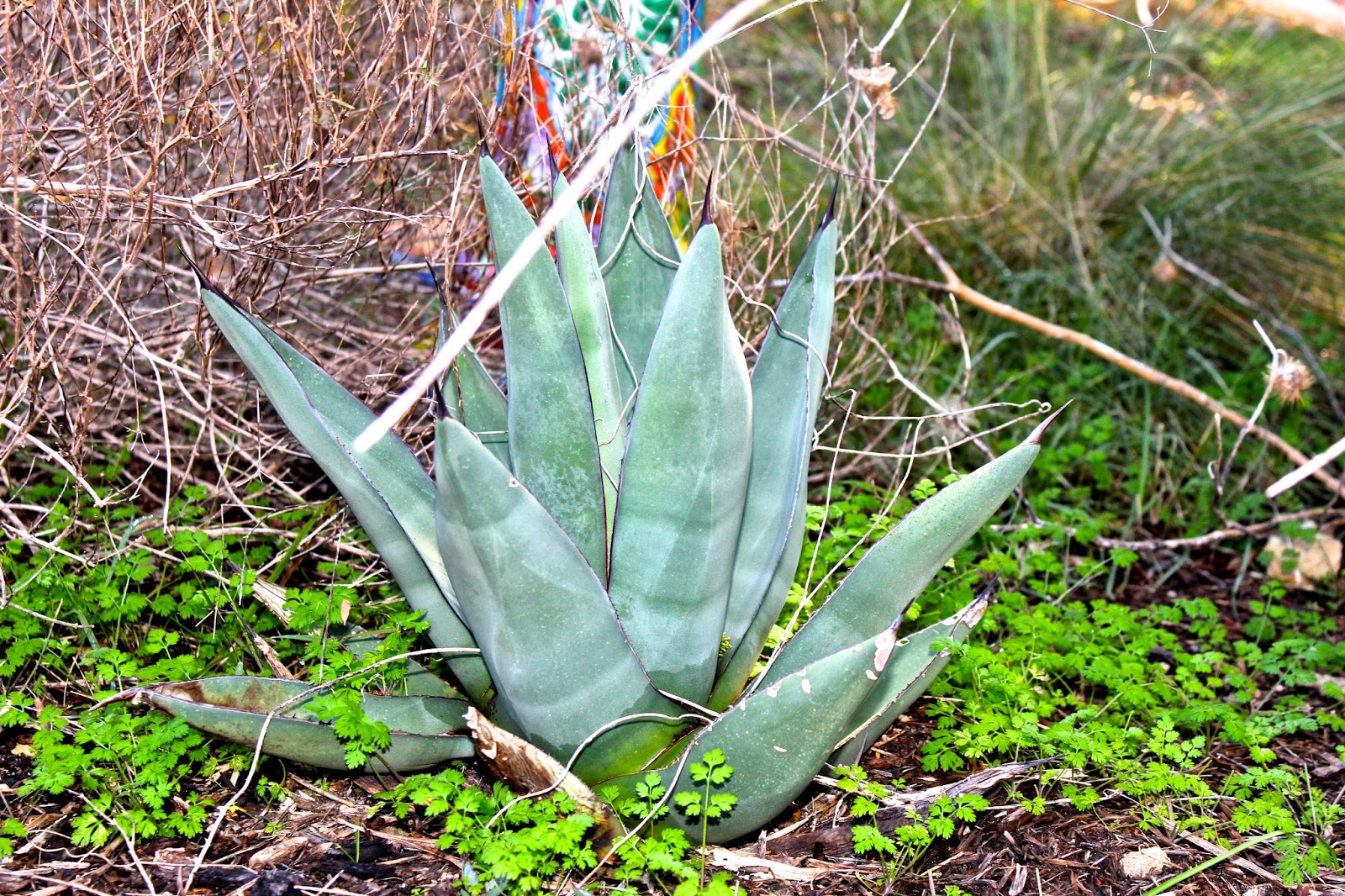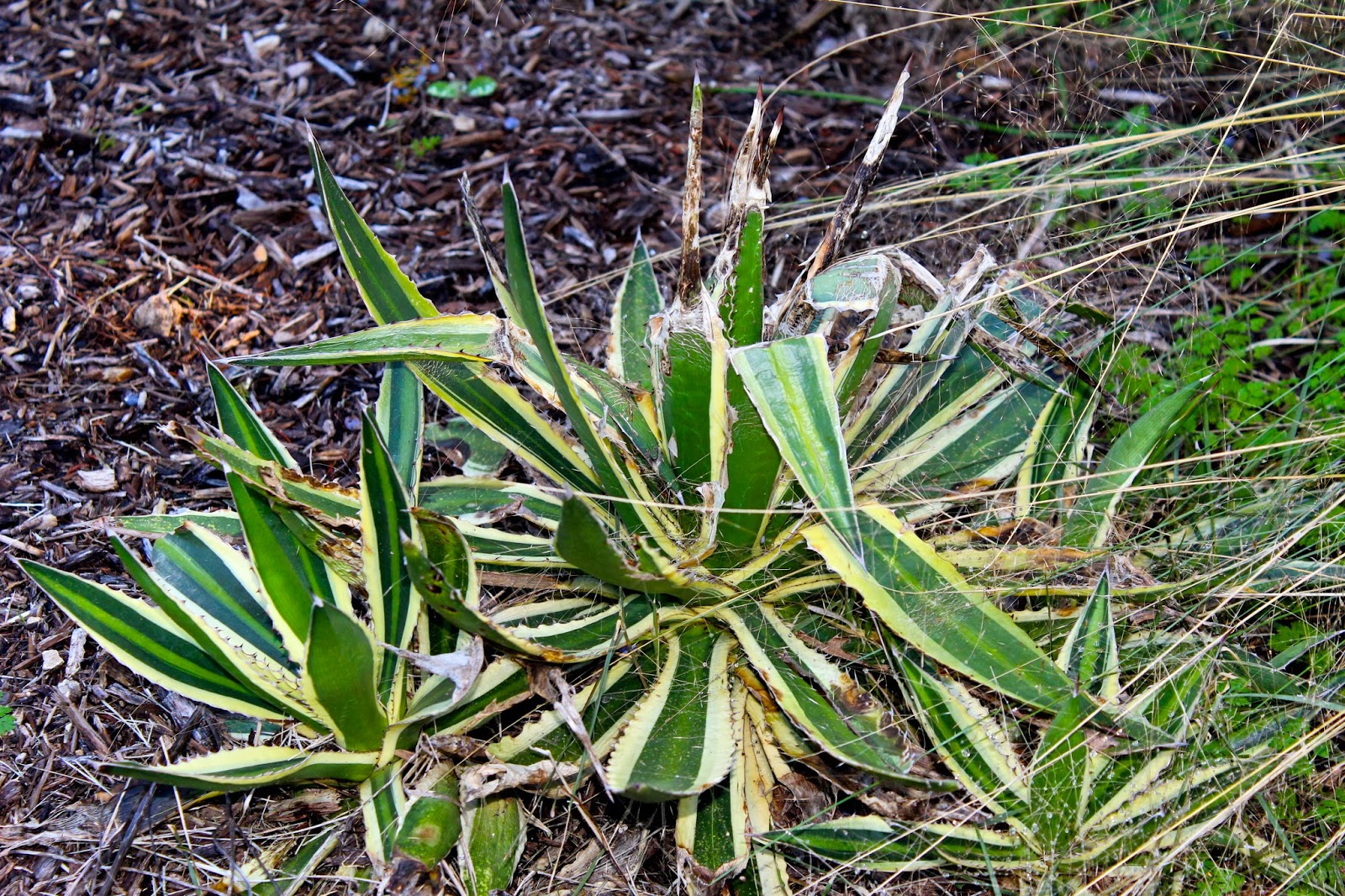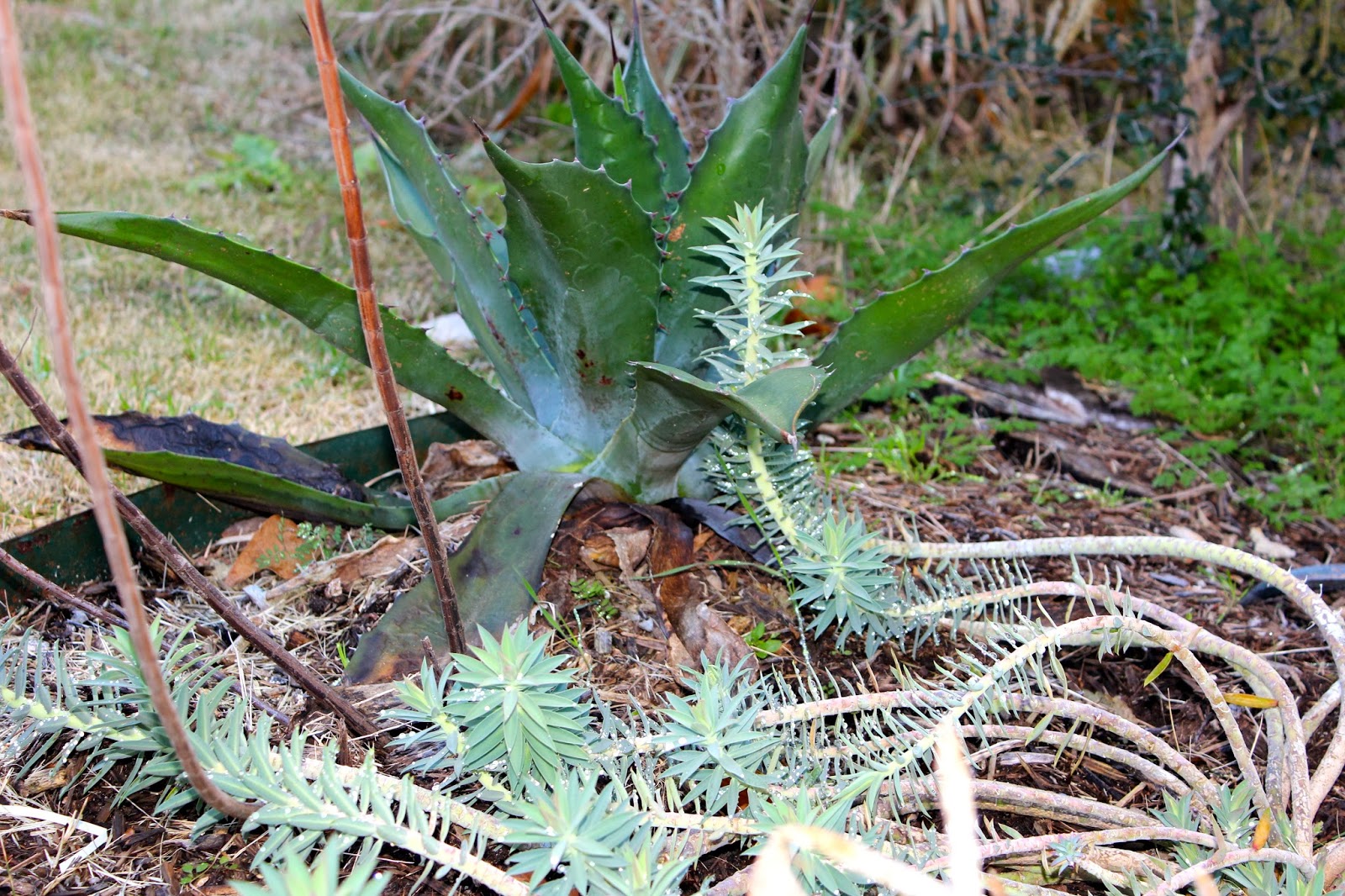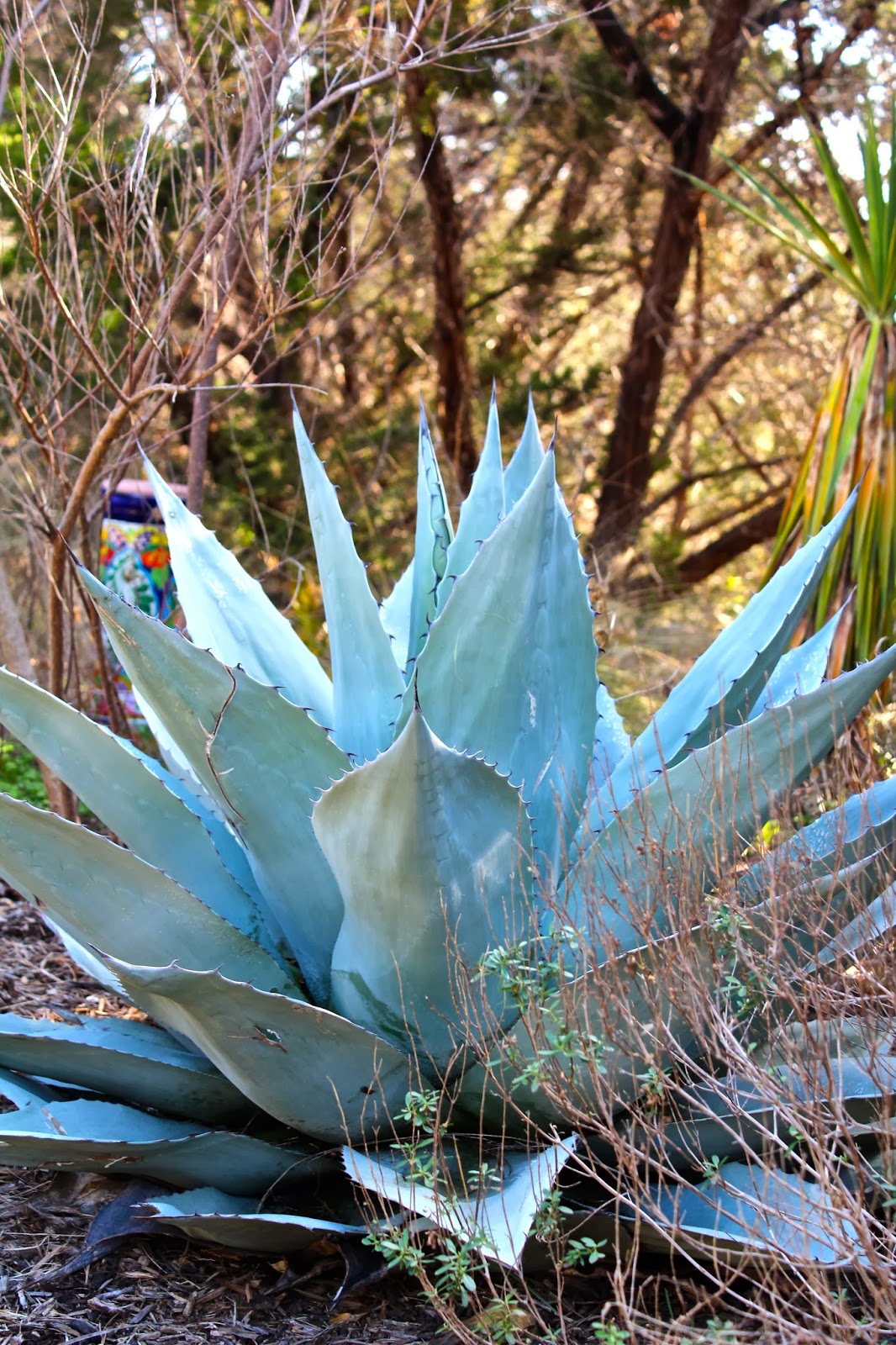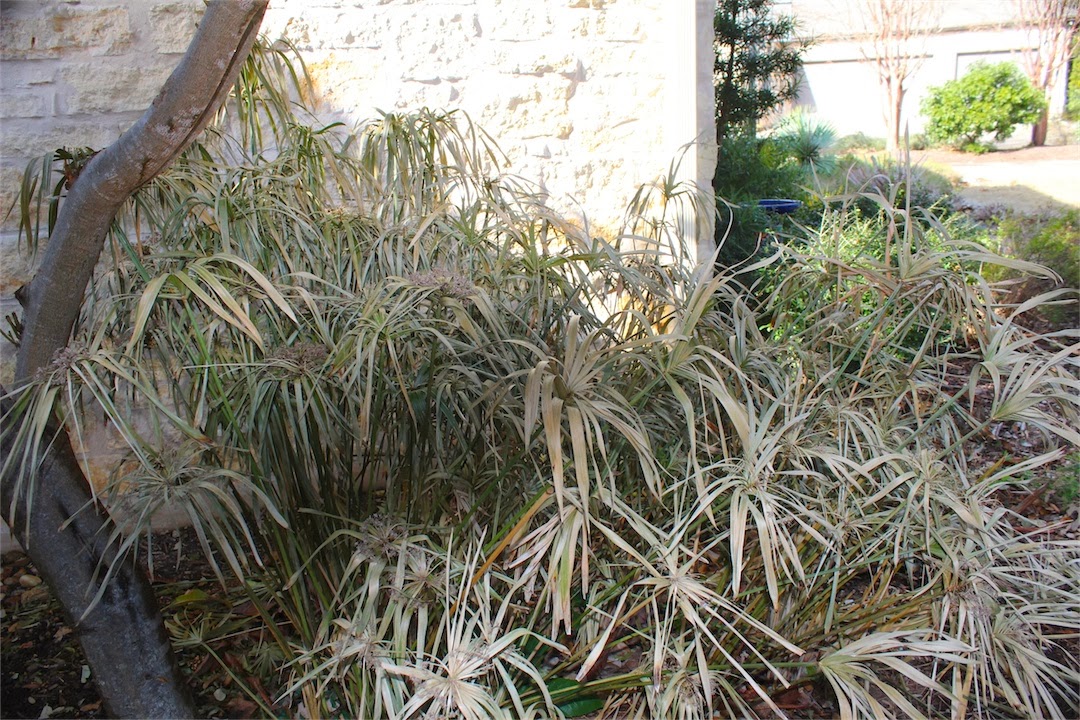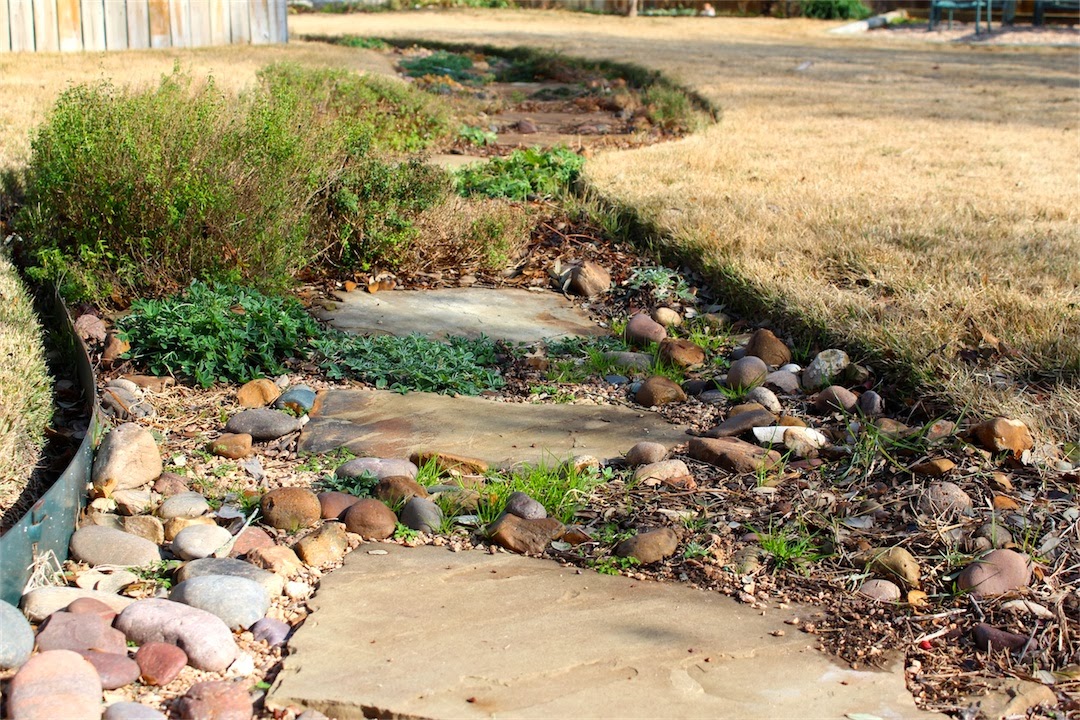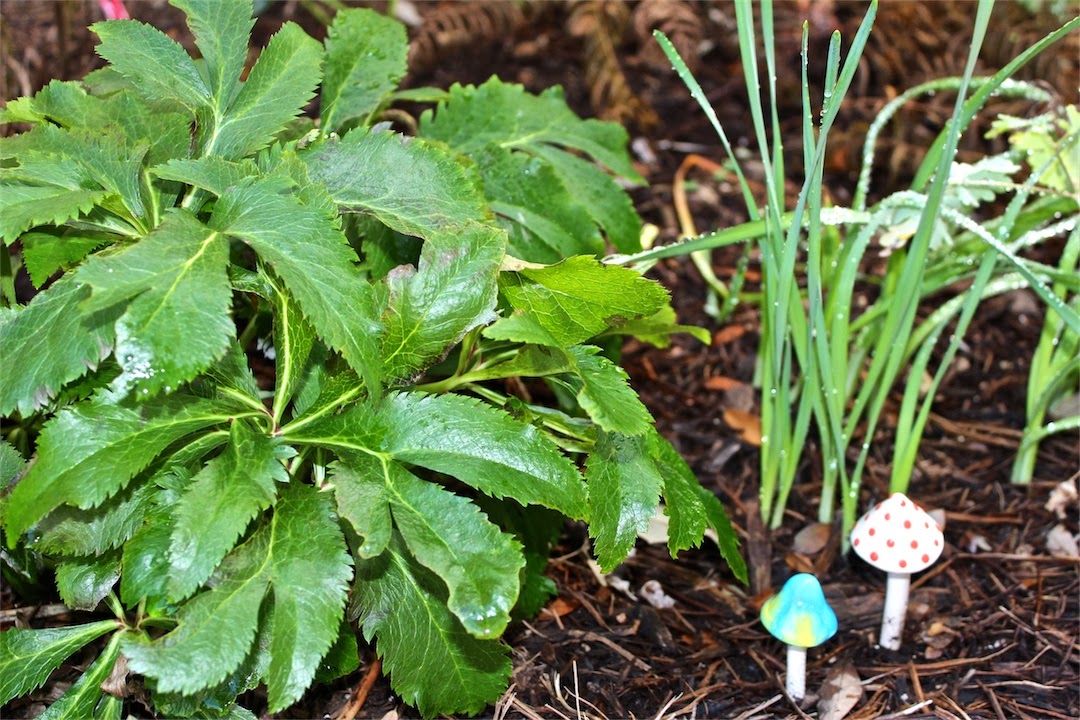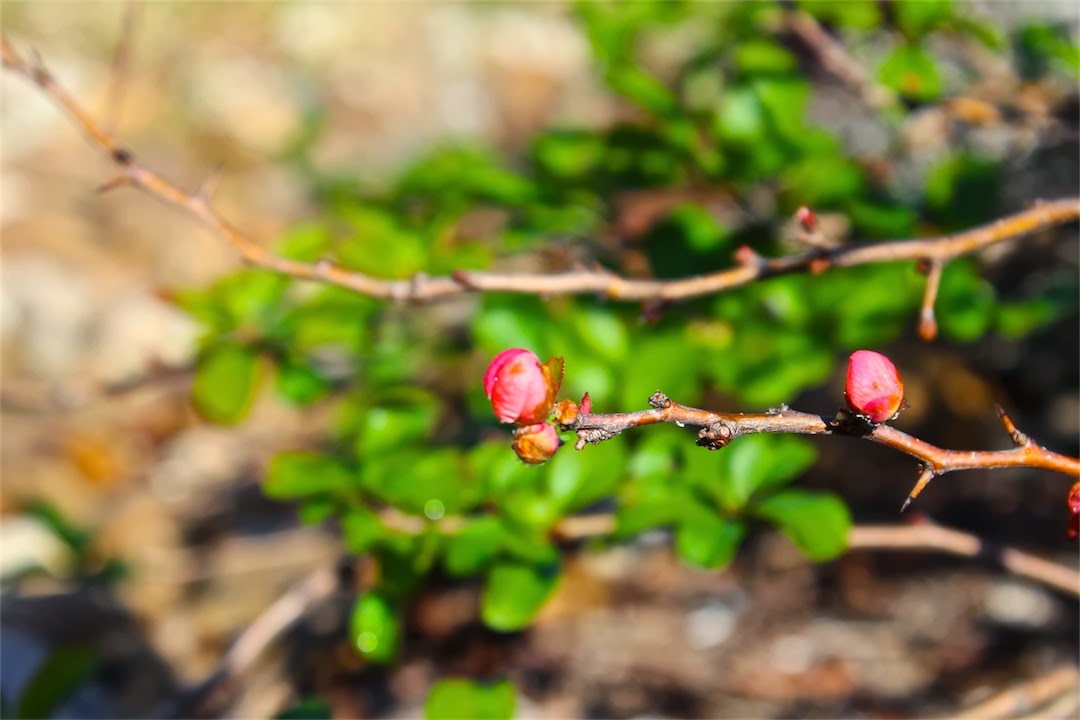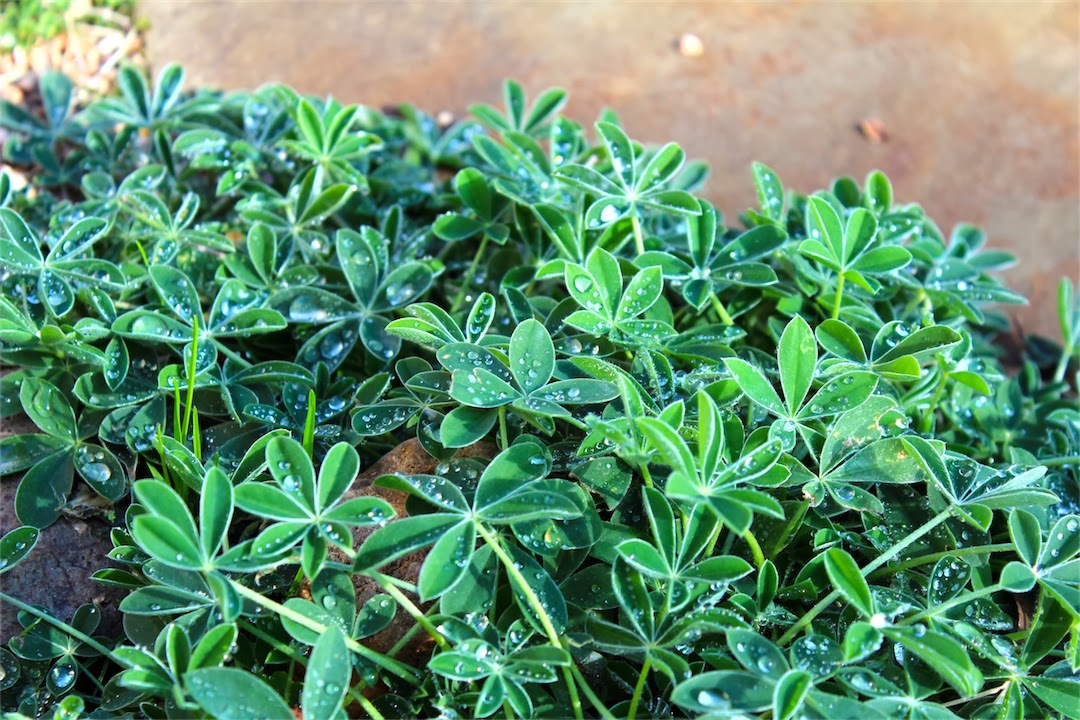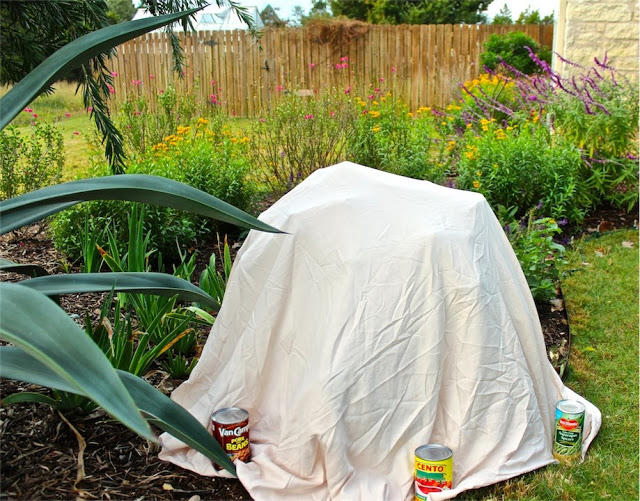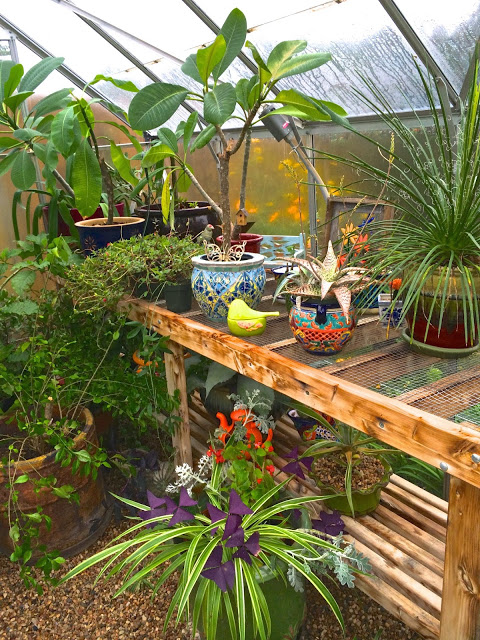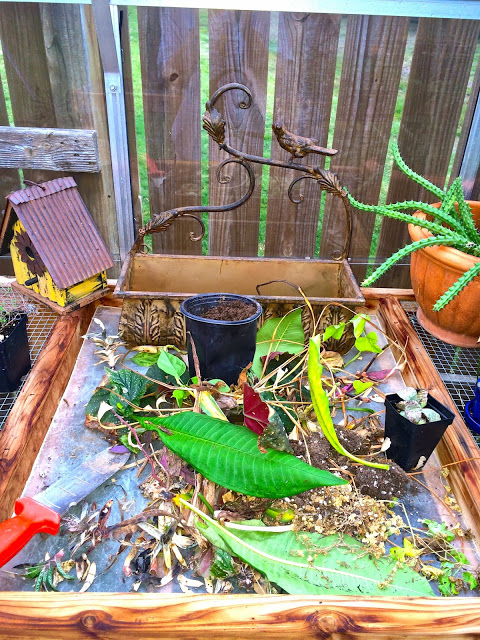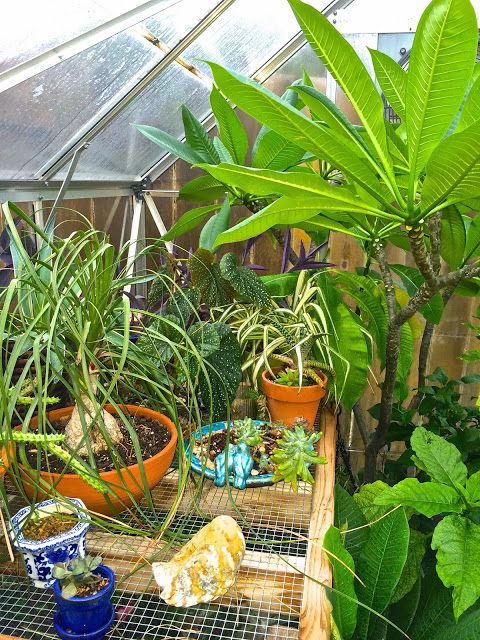Tillandsias – Get creative with color and texture
I spent some time out in the dreaded cedar pollen yesterday cleaning out and redesigning another tillandsia globe.
All the previous black sand, rocks and lichen came out and I washed the globe. Then I went to my tumbled glass pile and collected some beautiful green, clear, blue and gold pieces of glass to form the floor for my arrangement.
Then I wandered around the garden looking for some more interesting elements to add into the mix. I saw some lichen up high in the cedar elm tree. With the help of some high jumps and the broom, I was able to knock a few little bits of branch off onto the ground. Then I stole a piece from the fairy garden and took it all to the greenhouse to clean and assemble.
One piece of advice if you get yourself a big load of tumbled glass — don’t pile it up in the woods where it can get little bits of leaves and twigs in it — it’s a bear to get out of that glass. After a long spell with the colander and the hose, I finally called it good enough and made sure what was left was buried.
Another tip – have your tweezers and a paint brush on hand for manipulating things. Once I put the beautiful red tillandsia into the globe, it was difficult to position the lichens exactly as I had envisioned them.
I convinced myself that it looked natural this way!
Now to find the fishing line! I’m going to screw a hook to the back side of my desk hutch and hang it in my office.
Now I’m on the lookout for a container to make one for my daughter. And this, on a smaller scale, would make a great teacher/school office staff end-of-year gift, too, wouldn’t it? Or a hostess gift. Or…

